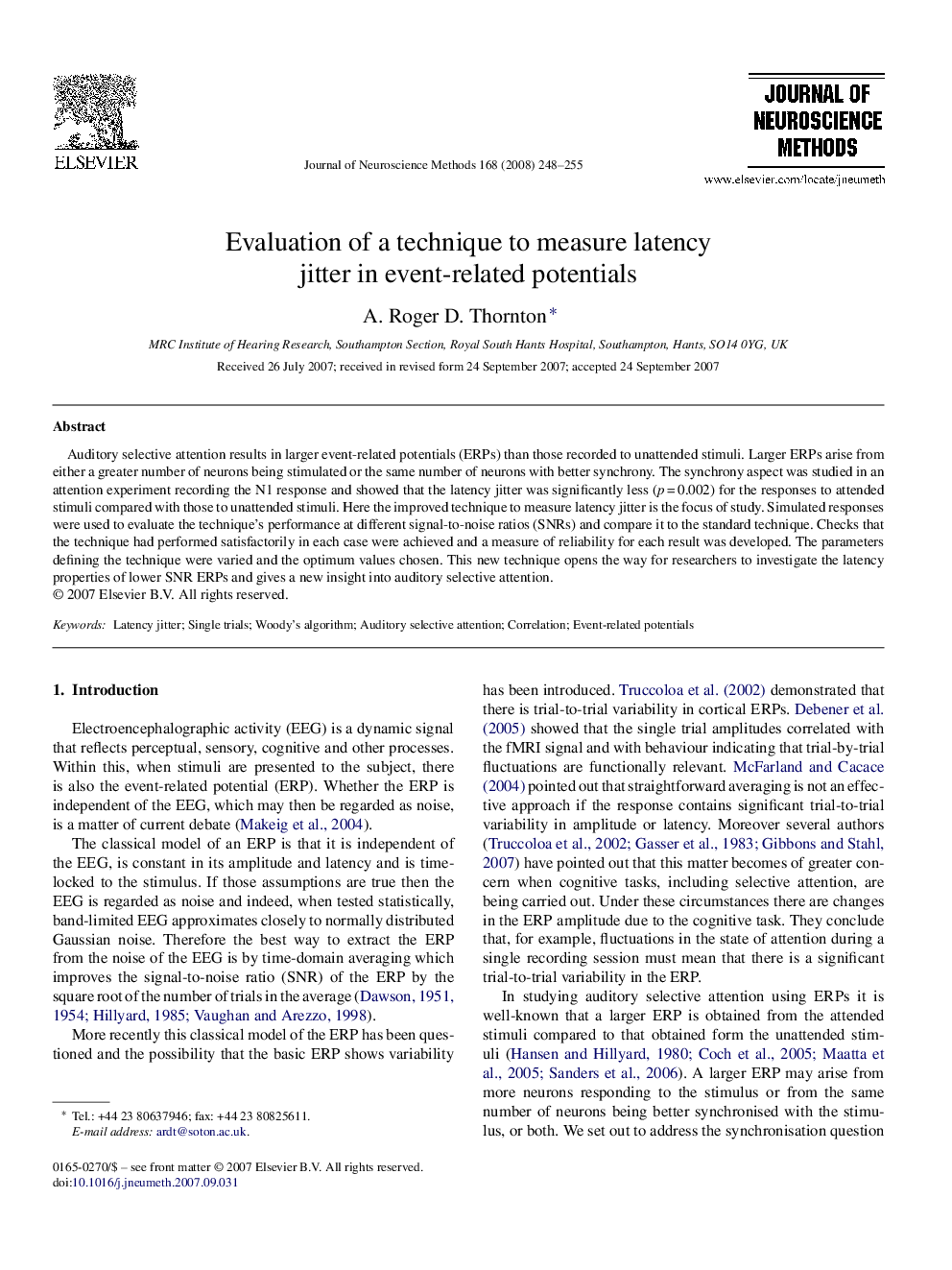| Article ID | Journal | Published Year | Pages | File Type |
|---|---|---|---|---|
| 4336637 | Journal of Neuroscience Methods | 2008 | 8 Pages |
Auditory selective attention results in larger event-related potentials (ERPs) than those recorded to unattended stimuli. Larger ERPs arise from either a greater number of neurons being stimulated or the same number of neurons with better synchrony. The synchrony aspect was studied in an attention experiment recording the N1 response and showed that the latency jitter was significantly less (p = 0.002) for the responses to attended stimuli compared with those to unattended stimuli. Here the improved technique to measure latency jitter is the focus of study. Simulated responses were used to evaluate the technique's performance at different signal-to-noise ratios (SNRs) and compare it to the standard technique. Checks that the technique had performed satisfactorily in each case were achieved and a measure of reliability for each result was developed. The parameters defining the technique were varied and the optimum values chosen. This new technique opens the way for researchers to investigate the latency properties of lower SNR ERPs and gives a new insight into auditory selective attention.
